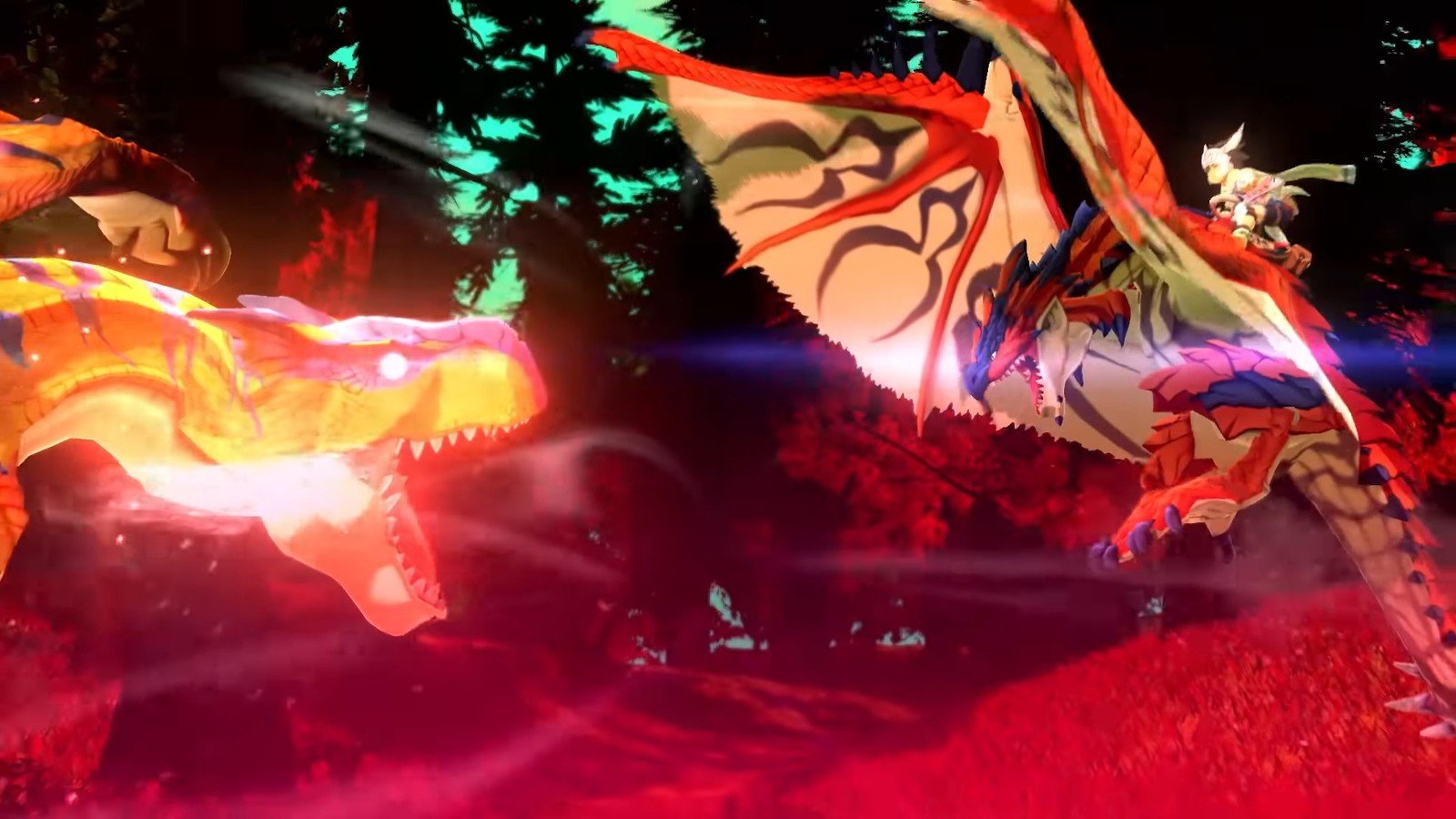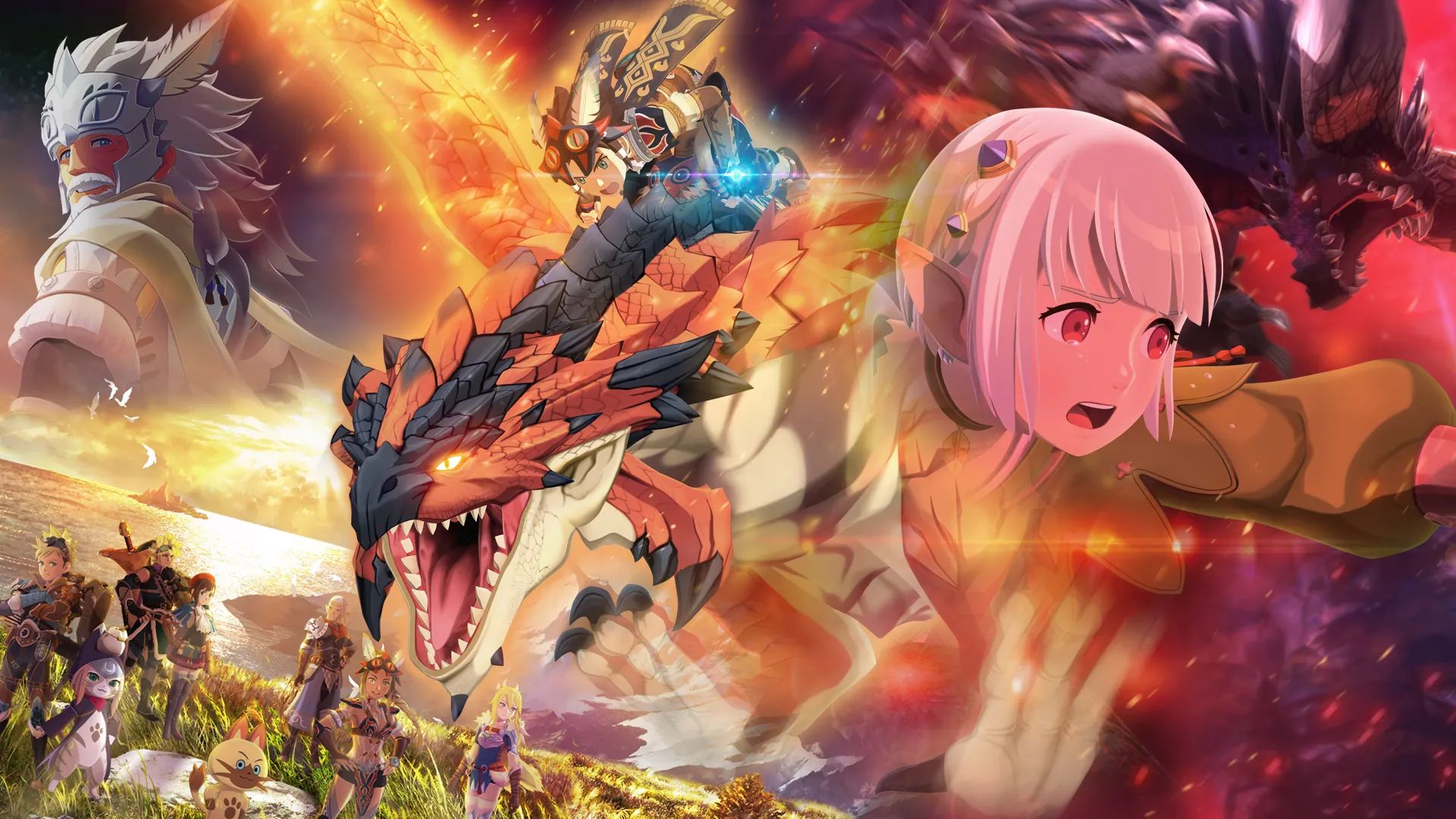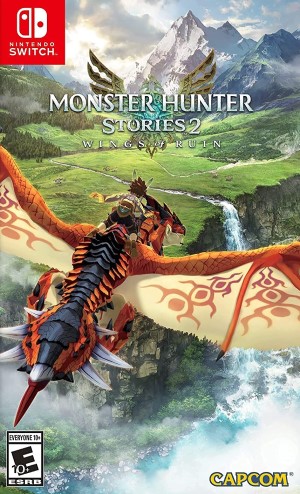
The original Monster Hunter Stories made a very fascinating pitch – Monster Hunter, but Pokemon. Getting to raise and go to battle with a party of the monsters that had terrorized players in the mainline Monster Huntergames was a great concept, and Monster Hunter Stories backed that up with oodles of charm and a gorgeous art style. The game also presented some very interesting conceits at the time – what if a Monster Hunter game was a turn-based RPG? Was it even possible for a Monster Hunter game to do that and not lose its distinct identity? How about a larger emphasis on the story? Was the world of Monster Hunter interesting enough to allow for a lengthy story-based RPG?
The original Monster Hunter Stories was a convincing, if flawed, first attempt at an answer to the question – the problem is, by the time it launched as a Nintendo 3DS exclusive in late 2017, no one was really listening, and its merits and flaws, for what they were worth, ended up mostly getting ignored by the world.
"The core premise is the same. It’s Monster Hunter, but Pokemon, meaning you’re actually going to be raising monsters in this game and going into battle against other monsters with them."
Monster Hunter Stories 2: Wings of Ruin, the unexpected sequel to the original game, is therefore going to be the first time most of the world gets to see whether Monster Hunter as a turn based, Pokemon style JRPG can work. The answer? Much like before, it’s a fairly convincing yes. Monster Hunter Stories 2 presents a really charming JRPG, with a gorgeous art style, nuanced and deep mechanics that add more and more complexity and depth as time goes on, great production values, and a deeper emphasis on the story that provides us more of a look at the world of Monster Hunter. It has its stumbles, some inherited from the original game, and some new ones of its own – but as a whole, Monster Hunter Stories 2 comes out as a well-done RPG that fans of the genre and of the series should look into.
The core premise is the same. It’s Monster Hunter, but Pokemon, meaning you’re actually going to be raising monsters in this game and going into battle against other monsters with them. Monster Hunter Stories 2 uses its premise to provide a deeper look at the world of the series as well. The story is actually a direct follow-up to the original, following the grandchild of that game’s protagonist Red, disturbances to the natural ecological balance around the world, and an egg entrusted to the player character, from which ends up hatching a black-winged flightless Rathalos, believed to be the legendary Wings of Ruin, long heralded to bring about the end of the world.

"Monster Hunter Stories 2 presents a really charming JRPG, with a gorgeous art style, nuanced and deep mechanics that add more and more complexity and depth as time goes on, great production values, and a deeper emphasis on the story that provides us more of a look at the world of Monster Hunter."
As the name of the sub-series suggests, the story is a bigger focus here than in the main games. This is achieved simply by having a story that the game pays more than lip service to, to be honest – the mainline games aren’t exactly known or played for their narrative prowess. But even on its own merits, it’s not a bad tale at all. Most of the characters you meet are charming, and the core premise, which has you venturing out from your secluded and sheltered coastal village into the world beyond to try and keep the baby Rathalos you have inherited safe and try to investigate the cause for the disturbances around the world, is engaging in and of itself. Mercifully, it also never gets overbearing – which is always an issue with JRPGs, which can go on and on for what can feel like hours with their cutscenes and dialog dumps, often repeating the same information over and over. No, the story in Wings of Ruin is mostly in the background for the bulk of the game, giving the player enough context to frame their actions in the game’s world, but never really hijacking what should be the player’s adventure.
The most important thing the story here achieves is how effective it is at onboarding – if you are not a fan of Monster Hunter, or are new to it, you won’t be lost in the slightest, and the game will slowly ease you into the series’ world; if you never played the original game, the game catches you up on all relevant plot details from that one so that you’re never lost whenever that story is referenced. But it does all of this while also being packed with loads of great details and fan-service for people already in the know – if you already play and love Monster Hunter, or if you finished Stories, then you will get so much out of the interminable number of references peppered through the game. Monster Hunter Stories 2 manages to strike the right balance between being welcoming to newcomers while also rewarding long-time fans.
The story, however, is ultimately merely an excuse for the player to engage with the game’s true hook – a turn-based Pokemon-style Monster Hunter JRPG. Here, too, Monster Hunter Stories 2 largely excels. Battles are layered, intricate, and honestly fairly complex, while retaining the mainline series’ tenets of observation of enemy attack patterns almost entirely. Battles see you and your raised monsters (“monsties”, yes, they seem to be sticking with that name) take on enemies in turn-based battles. All of your and your monster’s attacks, whether special skills or weapon-based moves, can be “Power”, “Technical”, or “Speed” based attacks (where Power beats Technical, Technical beats Speed, and Speed beats Power). Every monster favors certain kinds of attacks, and the player is encouraged to learn their patterns – for instance, a Jaggi may rely on speed-based attacks (meaning you should use Technical attacks to beat it), while an Arzuros on Power attacks (meaning you should use Speed). Then, too, these monsters may change what kind of attack they use based on how the battle is going – they may change their patterns when they get desperate or angry, for example.
This rock-paper-scissors mechanic comes primarily into play in head-to-heads with monsters. In any battle, you can see which enemy is targeting which party member. If the enemy and the party member are mutually targeting each other, you enter a head-to-head – at which point what kind of attack you used comes into play. If you used an attack that beats the attack that the enemy used, you dish out far more damage than you ordinarily would have. If you used one that the monster’s attack can beat, you take far more damage.

"There’s a crazy amount of stuff going on here, but, again, the game’s on-boarding is so gentle and effective, you don’t even realize how much it’s thrown at you until after you’ve mastered all of it."
It starts out from here, but it ends up adding and layering a crazy amount of mechanics into the mix – you can use multiple different types of weapons (blunt, pierce, and slash), and you need to be switching out depending on the monster’s anatomy (for example, a sword will glance out against a hard-shelled monster, which calls on you to use your hammer); monsters can have breakable parts, which you can target and break to put the enemy in a “downed” state (where every attack you land is a critical hit), and to get rare parts; monsters andweapons can have elemental affinities, which have their own rock-paper-scissor style interactions (ice won’t hurt water much, water will be extremely effective against fire); there are special attacks you and your monster can unleash to devastating effect, once you reach a certain level of synchronization in battle that lets you ride them. There’s a crazy amount of stuff going on here, but, again, the game’s on-boarding is so gentle and effective, you don’t even realize how much it’s thrown at you until after you’ve mastered all of it. Monster Hunter, as a series, has always been really bad with tutorialization – even Monster Hunter World and Rise, which broke out into the mainstream, are really bad with it, to be honest. Stories 2, thankfully, bucks that trend.
All of this complexity is maintained while the game still retains core Monster Hunter mechanics. You’re still crafting new weapons and gear for yourself from the parts of the monsters you beat (thankfully, crafting recipes themselves here are far less complex than in the main games, and a battle or two against a monster is usually enough to craft something from its parts). Then there’s the whole Pokemon style mechanic the game maintains alongside, too – out in the world, you can find monster dens, deep inside each of which there is the monster’s nest with a lot of its eggs. You can bring one of those eggs with you to hatch a monster and raise it and bring it into battle with you.
Getting these monsters is a process fraught with RNG – for instance, you rarely really know what monster egg you have until you hatch it (you get some hint after you successfully retrieve it, with a description like “gentle herbivore egg”); it’s impossible for you to know the quality of the monster that will hatch until it hatches (though when you are picking an egg, you’re given some vague indicators, and typically allowed to drop your current egg and pick up another one instead if you don’t like what you see). The game does end up giving some control over the process to the player – beating monsters in battles can often cause them to retreat to their dens, which then get marked on the player’s map. Retrieving an egg from that den will always get the player an egg of the species the player beat, for example. But on the whole, there’s enough randomization involved in the process that it becomes clear that the game expects the player to retrieve multiple eggs at any chance they get to maximize their chances at having the best possible monster specimen.

"Turn-based JRPGs typically keep trash mob fights fairly quick, but in Monster Hunter Stories 2, given just how many mechanics are in play at any given time, battles can go on for many, many minutes. Thankfully, the game has several tools to allay this issue."
This isn’t really an issue – you don’t need to have the toppest tier of a monster possible, and honestly the game is easy enough that even sub-par monsties manage to do more than fine in getting you through the story. But it does lead to some repetition – the repetition of going into monster dens to claim eggs and hatch them, sure, but Monster Hunter is a series built on repetition of mechanics, and this isn’t really the end of the world here. The issue is, rather, the visual repetition involved – for how often players, even those who are not after the perfect specimen, will have to go into these monster dens, there really isn’t enough visual variety, and dens all start feeling and looking distinctly samey after a while. It’s unclear why this is the case – especially early on, pretty much every single den can end up looking and being structured the exact same way, so you end up feeling like you’re basically redoing the same mini-dungeon over and over again.
Another issue the game can suffer from is loading times. Every time you enter or exit an area (including a monster den), or a battle, there’s a loading screen (on top of the transition animations in the case of battles). These loading times are never really bad – we’re talking at most 1-2 seconds here, and to be honest, very often they are less than that. But they add up, particularly in the case of the battles, and given that battles already have transition animations at the start and end, it can get a little grating. At least, as mentioned, the loading times are really short – but they can definitely make battles feel like more of a commitment, which is an issue the battles struggle with elsewhere too.
This mostly comes down to how long they can feel. Turn-based JRPGs typically keep trash mob fights fairly quick, but in Monster Hunter Stories 2, given just how many mechanics are in play at any given time, battles can go on for many, many minutes. Thankfully, the game has several tools to allay this issue – you can speed battles up to three times their regular speed (which also ends up automatically skipping all the elaborate attack animations), and if you are over-leveled compared to the enemy, you can just skip the battle outright while still getting EXP and drops.

"Every time you enter or exit an area (including a monster den), or a battle, there’s a loading screen (on top of the transition animations in the case of battles). These loading times are never really bad – we’re talking at most 1-2 seconds here, and to be honest, very often they are less than that. But they add up, particularly in the case of the battles."
Those elaborate attack animations look gorgeous, though – the entire game does. While this is very clearly a lower budget game than the mainline titles, and it is built around the limitations of the Switch hardware, Monster Hunter Stories 2 ends up looking pretty regardless. This comes down to its utterly gorgeous art style (and, I assume, to the RE Engine managing to get a lot of mileage from the hardware, as it usually does). Visually, the only blemish is the unlocked framerate – which can cause some distracting aberrations in the game performance in places (for example, the game seems to run at a full 60fps inside buildings, while battles are 30fps, and the overworld can be slightly higher than 30, but well below 60).
This great visual presentation presents, as mentioned, some great monsters, a charming story, and a great world to explore, with a lot of personality packed into each new region you visit, beckoning you to spend the time to uncover all its secrets. On the sound side of things, the voice acting is good (barring an annoying mascot character), though the game’s insistence on not having overworld music (as is the case with the mainline games) is a bit of a bummer. The music in Monster Hunter Stories 2 in general isn’t really anything that stands out – but it’s good enough to hold up its end of the bargain, and to not let the visual presentation down.
Will you like Monster Hunter Stories 2? It’s a really well-made JRPG with high production values that brings a lot of unique spins to the table, so chances are, you will. If you like Monster Hunter, or RPGs, or both, you’ll probably find a lot to like here. Even folks who are unfamiliar with the original Monster Hunter Stories game, or just Monster Hunter in general, will probably end up finding themselves enamored by the mechanically dense and well-made RPG on offer. It’s not perfect, and a presumed third game in the series still has a fair bit to address – but nothing here is game-breaking, and Wings of Ruin is a mechanically compelling RPG with high production values, and definitely among the best games of this style available on the Switch.
This game was reviewed on Nintendo Switch.
Gorgeous art style; high production values; mechanically extremely dense; compelling battle system; extremely well tutorialized; is equally welcoming to fans and newcomers to JRPGs and Monster Hunter alike
Loads of (short) loading screens; unlocked framerate can lead to the game feeling janky; battles can take really long (though speed up and skip options exist)
















